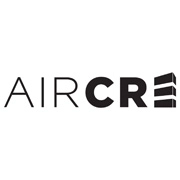
When undertaking home renovations, figuring out how to store tenant belongings during renovations can be a significant challenge. Proper storage is crucial to safeguarding items from damage and minimizing tenant disruption. Without a clear plan, the process can become chaotic, leading to stress and potential losses. By carefully considering your storage options and preparing in advance, you can ensure tenants’ belongings are kept safe and organized. That protects their possessions and contributes to a smoother, more efficient renovation process. Planning and choosing the right storage solutions makes the entire experience more manageable and less stressful for everyone involved.
Assess the Situation: Understanding Your Storage Needs
Before you start your renovation project, it’s important to understand your storage needs for your tenant’s belongings. Begin by evaluating the volume and type of items that need storage. That includes everything from furniture and electronics to personal mementos. Next, consider the duration of the renovation. A short-term project might require less storage space than a long-term one.
Additionally, consider any special requirements for certain items. For example, electronics and antiques may need extra protection. Considering these factors, you can choose the most suitable storage solution and avoid any last-minute surprises.
Where to Store Tenant Belongings During Renovations
Selecting the right storage solution is key to managing tenant belongings effectively during renovations. Depending on your needs and the specifics of the renovation, you have several options to consider.
How Do You Pick the Right Storage Option for You?
Choosing the right storage option involves more than just knowing your needs; it requires navigating specific challenges. Finding adequate storage in big cities can be tough due to high demand and limited availability. When evaluating your options, focus on factors such as the proximity of the storage unit to your home, accessibility, and security features. Consider whether you need climate control for sensitive items or a standard unit. By carefully assessing these elements, you can pick the right storage unit that meets your requirements and fits your city-specific constraints.
On-Site Storage
If space allows, utilizing on-site storage can be an effective solution. Areas like garages, basements, or unused rooms can be repurposed to store tenant belongings during renovations. Ensure the space is clean, dry, and secure to prevent potential damage. Properly organize and protect items to make the storage area as functional as possible. This option can be cost-effective and convenient but requires careful planning and organization.
Temporary Storage Units
Temporary storage units offer a flexible and convenient option for keeping tenant belongings safe. Portable storage containers can be delivered to the property, allowing you to pack and store items on-site. Alternatively, renting a self-storage unit provides a secure off-site storage space. That can be especially useful if the renovation involves significant work or lasts several weeks. However, weigh the pros and cons, such as cost and accessibility, to determine the best fit for your situation.
Packing and Organizing Belongings
Use sturdy boxes and packing materials to safeguard your belongings. Avoid overloading boxes to prevent them from breaking. Wrap fragile items in bubble wrap or packing paper, and use cushioning to fill any gaps inside the boxes. Label each box with its contents and the room it belongs to, making unpacking much easier.
When organizing packed items, keep similar items together and arrange them logically—for example, group kitchen items with other kitchen items and books with other books. Consider prioritizing easy access to frequently used items by placing them in clearly labeled boxes that are readily accessible.
Protecting Fragile and Valuable Items
Proper handling and storage can prevent damage and give you peace of mind. For fragile items, take extra care when packing. Wrap each piece individually with bubble wrap or packing paper to cushion it from potential impacts. Place these wrapped items in sturdy boxes with additional padding at the bottom and sides. Label these boxes as “fragile” to alert movers and handlers to treat them carefully.
When storing valuables, it’s important to choose a secure and accessible location. For high-value items like jewelry, important documents, or collectibles, consider keeping them in a locked, secure box or a safe within the storage area. You might also consider additional insurance to cover any potential loss or damage.
Communicating with Tenants
A healthy relationship with your tenant is crucial for a smooth renovation process. Start by providing detailed instructions on packing, labeling, and organizing their belongings. This guidance will help tenants manage their items efficiently. Keep them informed about the renovation timeline and any changes that might impact their belongings. Regular updates and open lines of communication reduce confusion and anxiety. Be available to address any questions or concerns that arise. By offering support and staying responsive, you’ll help maintain a positive relationship and ensure the renovation goes smoothly for everyone involved.
Managing the Transition
Managing the transition of tenant belongings requires careful coordination. Before renovations start, schedule a walkthrough with tenants to finalize the storage plan and ensure everything is packed and ready. During the renovation, regularly check that stored items remain in good condition and address any issues immediately. Once renovations are complete, assist tenants with unpacking and moving their belongings back into place, ensuring all items are returned in the same condition. This approach helps ensure a smooth transition and enhances tenant satisfaction.
Conclusion: Making the Process Smooth for Everyone
In conclusion, successfully managing how to store tenant belongings during renovations can make the entire process much smoother for everyone involved. You can protect tenant possessions and minimize disruption by carefully assessing your storage needs, selecting the right solutions, and following best practices for packing and communication. Clear instructions and regular updates will keep tenants informed and reduce their stress. With thoughtful planning and effective management, you can ensure that the renovation experience is as seamless and positive as possible for tenants and property managers.








